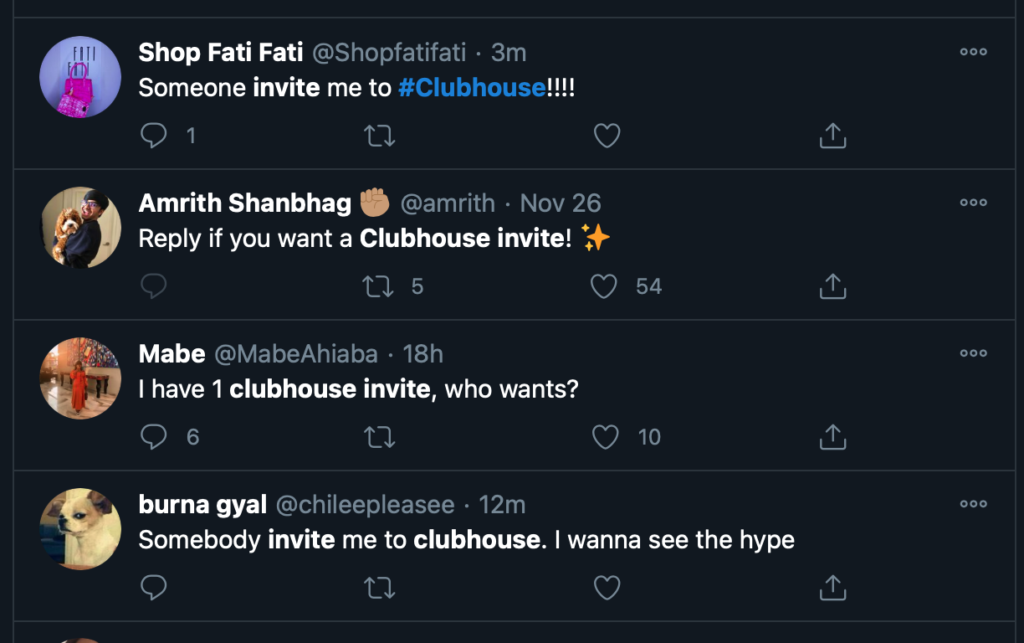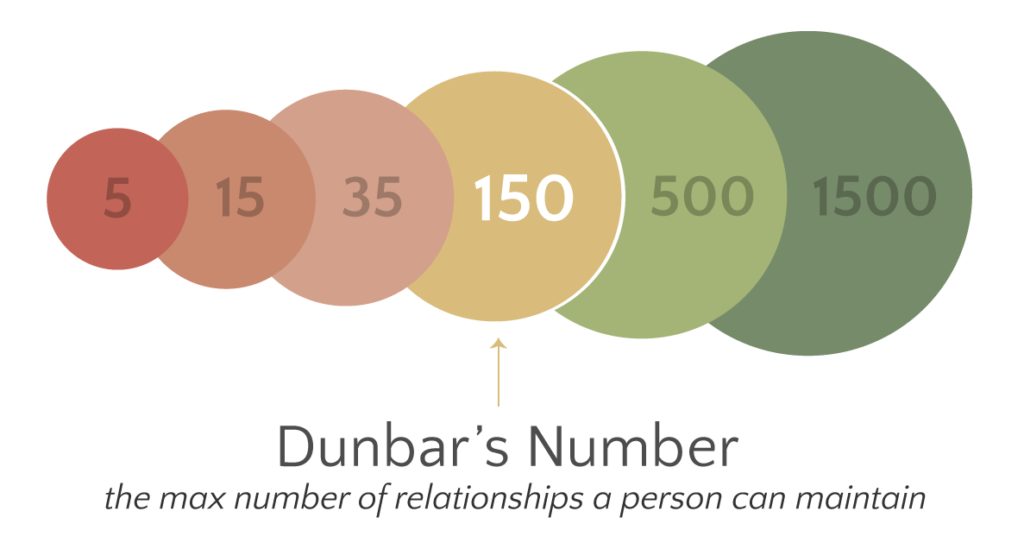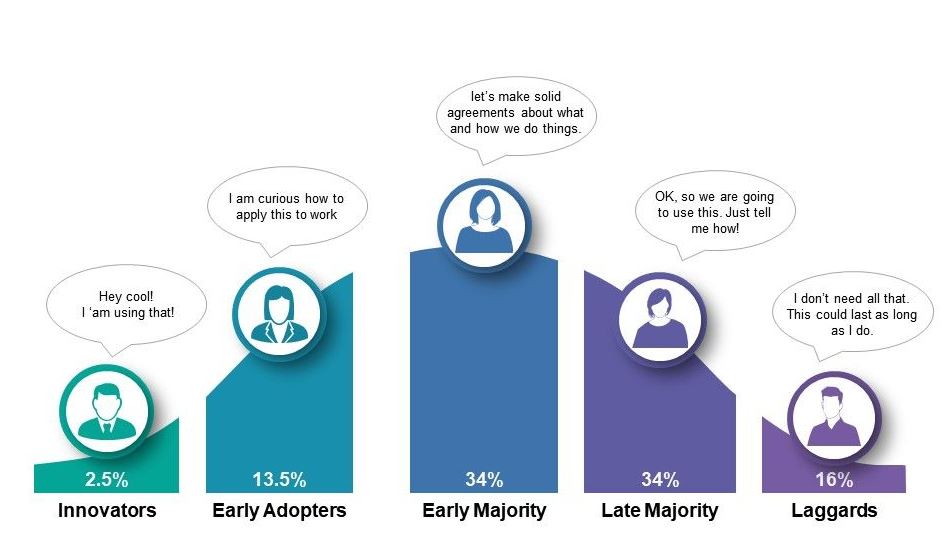If you’ve been on Twitter in the past two weeks, you’ve probably seen at least one person looking for or offering up invites for a new app called Clubhouse. Maybe you’ve even seen people trying to sell their invites. What is Clubhouse? Clubhouse is a voice-based social network app. In the app, you can join a room and start chatting with friends. It was developed in July during the middle of a global pandemic and has taken off in the circles of Silicon Valley and the like. It is currently still in an invite-only beta.

While it may seem obvious that an app like this is taking off amid a global pandemic where in-person social interactions are limited, I have wondered if there is more to it than that. How many other apps and devices do something similar, that people are already familiar with. Discord is the closest that comes to mind, offering rooms with text chat and voice chat, but there are also: Zoom, Skype, FaceTime, GoToMeeting, etc.
Or like…just an old fashioned phone call.
At work and at home, I hear on weekly how tired people are of downloading or signing up for yet ANOTHER app to talk to people remotely. So why are people begging and maybe even paying to sign up for Clubhouse which only offers voice chat?
I think there’s more psychology at work here than innovation.
Growth and user adoption are hard. No one wants to use a social media app where none of their friends are. That’s why almost every Facebook or Instagram challenger that has popped up in the past decade has failed to reach true competitor status.
Depending on how you look at it, this changes slightly when you take into consideration video or voice chat is a bit more intimate than just posting on Facebook. While you might be okay with 500+ friends on Facebook seeing what you’re posting, you might not want to join an audio chat room with even a portion of those 500 people. But if none of the people you want to chat with are on the app, what’s to keep you engaged?
In a Twitter thread about Clubhouse, someone said that a “quasi paywall for a free app is an anti-growth strategy”. While I agree long term, this isn’t an effective growth strategy, in the short term, I think this is an effective method for growth. Psychology supports this, and there are many examples of ‘big tech’ companies who have used the same principles for early growth.
Scarcity Principle
The scarcity principle is a well known economic and psychological concept. Economically, this is typically applied to physical goods, for example, Lysol wipes or toilet paper during the pandemic. People will buy it and pay more because they’re afraid it won’t be there next time.
Psychologically, it can be used to artificially grow and drive demand. If you have ever been shopping online and seen “only x left!” or “available for a limited time!”, that is the scarcity principle at work. For example, fashion streetwear brands have used “limited drops” to create the illusion of scarcity in their products. Nike releases limited-edition versions of their Air Force sneakers that sell out immediately, and resale for 5-10x. The biggest sneaker manufacturer in the world could produce more pairs of a sneaker if they wanted to, but they choose not to, artificially increasing the demand and price.
For digital products and services, in the time of near-infinite scaling of online services through AWS, Azure, or Google Cloud, there aren’t many technical limitations to scale like there may have been ten or twenty years ago. By creating a limited invite-only system versus an open invite system, you’re assigning value to an invite by limiting the amount that exists.
In the aforementioned Twitter thread, the claim that this invite system limits growth is effectively moot since every user has about 20 invites available at this time. Through Dunbar’s principle, the average person has five close friends and fifteen good friends (the circles continue to expand further). In relation to Clubhouse, this means you would have to invite ALL of your close friends and good friends (5 + 15 = 20) and all of them would have to accept to use up your invites. This also assumes there is no overlap between invites/friends.

While on the surface, the invite limit would seem to put a limit on growth, in reality, most people will not hit their limit. But having a limit creates demand and value by limiting the supply.
This is further substantiated by looking at Clubhouse’s growth numbers. Through a bug in their API, Twitter user @rashiq was able to see 106k people have signed up, and they’re adding 20 new users per minute. If every user organically invited 20 friends, they would surpass 2 million users in one factorial and nearly 1 billion in the fourth factorial (1/3 of Facebook MAU). You would surpass the global population by 10 billion in the fifth factorial.
Fear of Missing Out (FOMO)
An invitation-only system creates a walled garden of sorts. Everyone outside wants to see what’s inside for fear of missing out on the fun in the Clubhouse. This relates to the scarcity principle because if everyone could just sign up and join, demand would quickly fade. There are dozens of free apps that allow you to chat with friends. Discord is the most similar to Clubhouse and popular in its own right. They’ve seen growth in the age of COVID, but they’re not going viral right now like Clubhouse is and there’s not even a waitlist. There’s no walled garden, it’s easy to sign up and see what’s inside Discord.
FOMO is compounded in technology by the innovation adoption lifecycle. There’s a notable percentage of the population that are early adopters of technology (15%). These people thrive from getting access to the newest apps and create a sense of FOMO for the people around them. These are the same people who take pride in having their Twitter handle show it was created before 2010 and the same people who talk about how good Reddit was before it was cool.

Hey…This Sounds Familiar
Like I said to start, I don’t think this is a good long-term growth strategy, but there have been plenty of tech companies that have used the same principles with varying success.
Hey is an email service operated by the same people behind Basecamp. They had a similar viral burst when they launched in June with limited free invites. They expected 20,000 users their first month and got a 200,000 person waitlist in their first weeks. For a paid email service in a sea of free email services, this shows how powerful these principles can be.
Spotify at launch was also invite-only, but with one exception. You could pay to skip the waitlist and join their paid Premium plan. Spotify since its inception has been competing with free music, both legal and illegal. So how do you get someone to pay for something they could otherwise get for free? Create a sense of exclusivity. With 15% of people wanting to be an early adopter, if you can get even a fraction of them to pay $10/mo you’ll have a multi-million dollar business. People forget that at its start Spotify didn’t have most of the features and UI we take for granted today — it was clunky and had a small library to choose from.
Google+ was Google’s fourth attempt at starting a social media competitor, and they were invite-only to start. Early users were given 15 invitations to share (five less than Clubhouse). While some may see it shutting down last year after 8 years as a failure, it has been one of the biggest competitors to the big social media companies. Two weeks after launch they passed 10 million users. A month in, they passed 25 million users. By the end of its first year, Google+ had 90 million users.
These are just three examples of many, many, many available. I can’t say for certain Clubhouse is intentionally creating a faux scarcity of their platform since they are still in beta, but it does seem to be helping grow awareness and demand to join.
